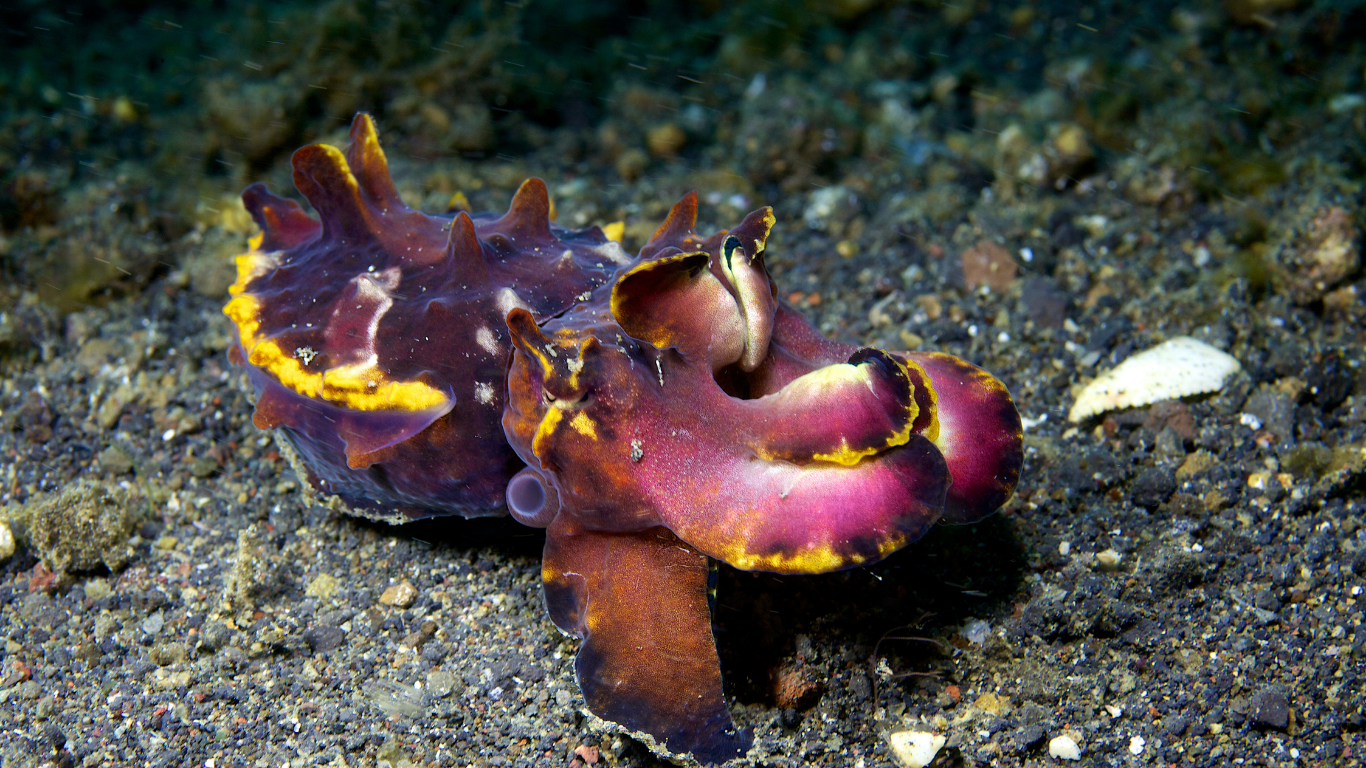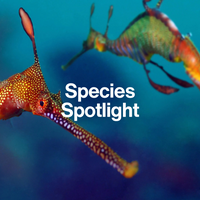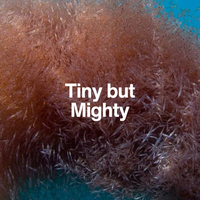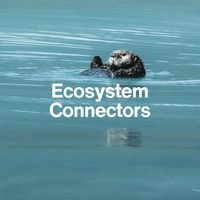The Deep-Sea Drifter
Dumbo Octopus

With ear-like fins and a slow, graceful glide, this soft-bodied marvel thrives where few others dare to go.
Introduction
Meet the Dumbo Octopus
Floating like a cartoon brought to life, the dumbo octopus (Grimpoteuthis spp.) is one of the most charming—and mysterious—inhabitants of the deep sea. Named after Disney’s Dumbo for the ear-like fins on either side of its head, this animal doesn’t ink or jet away like its shallow-water relatives. Instead, it pulses gently through the dark with a ghostly calm.
Found in oceans around the world at depths of up to 7,000 metres, dumbo octopuses live in a world of eternal darkness, crushing pressure, and near-freezing temperatures. Yet they survive—and even thrive—with softness, subtlety, and perfect design.

Fun Fact
Dumbo octopuses are the deepest-living of all known octopus species.
Biology & Behaviour
Drifting Through Darkness
Unlike other octopuses, dumbo octopuses don’t have an ink sac—because they don’t need one. Predators are rare in the deep sea, and speed is less useful than stealth. Instead of jet propulsion, they move by flapping their fins and pulsing their arms, drifting like jellyfish over the ocean floor.
They use their webbed arms like a parachute, hovering above the sediment and using suction to trap small prey—such as worms, crustaceans, and copepods—then swallow them whole.
With a soft, gelatinous body and excellent sensory systems, they’re perfectly adapted to the cold, quiet realm of the abyss.
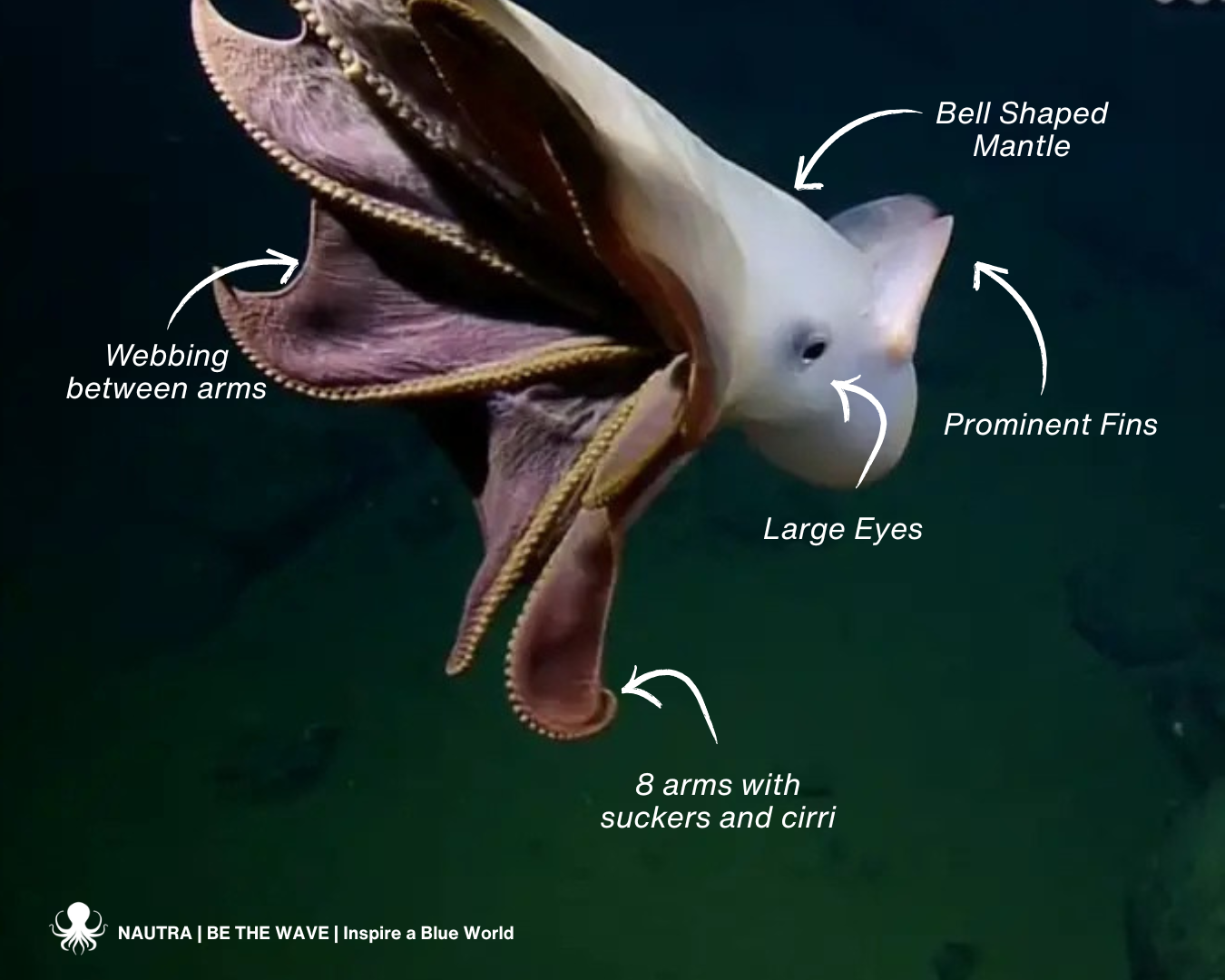
Reproduction
Ready When They Are
Dumbo octopuses have a rare reproductive strategy: they don’t have a specific mating season. Instead, females carry multiple eggs at different stages and can reproduce whenever conditions allow.
After mating, the female lays eggs on rocks or coral on the seafloor, leaving them to develop without parental care. This slow, low-energy lifestyle fits the deep sea, where resources are scarce and survival depends on flexibility.

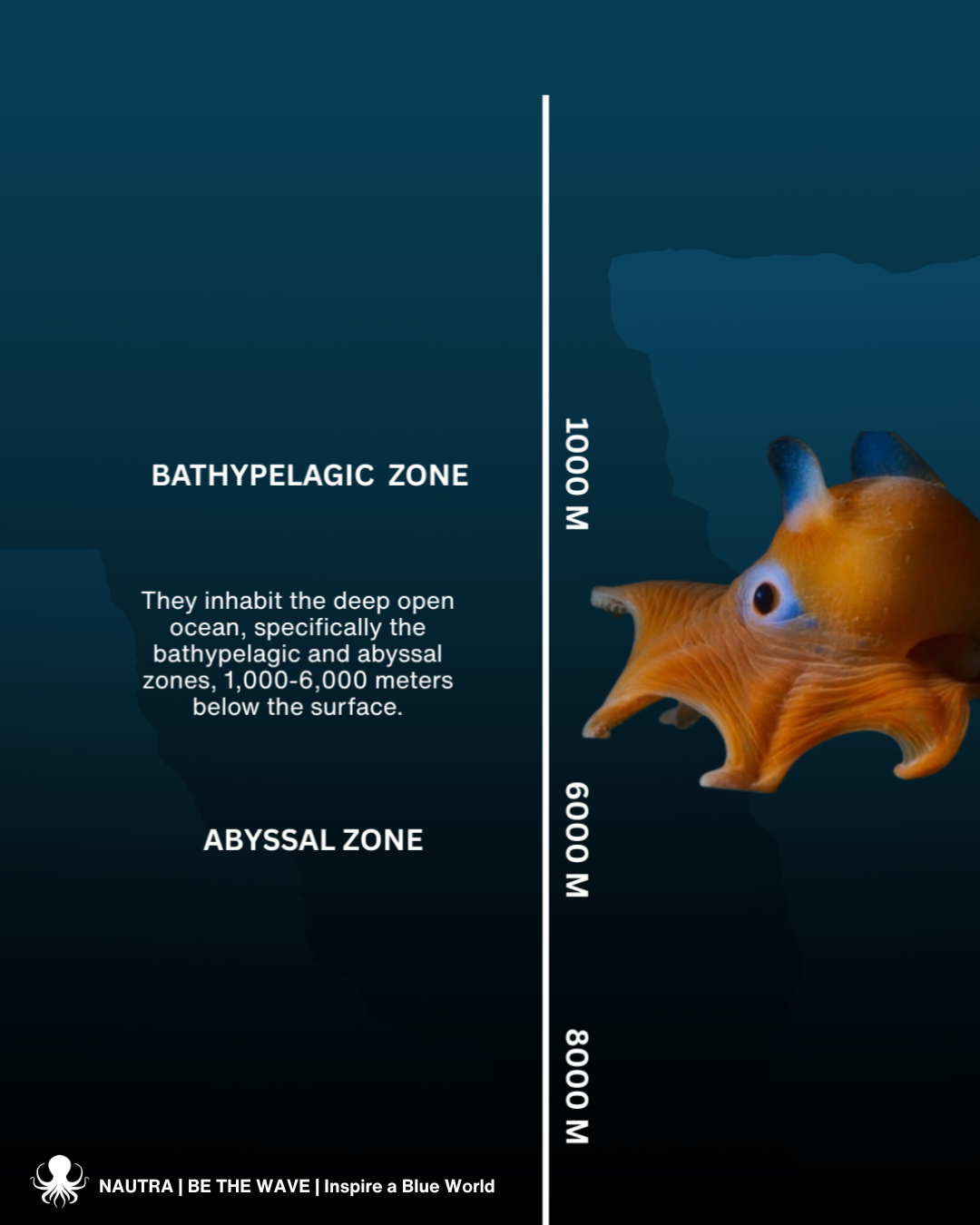
Conservation & Threats
Unknowns in the Abyss
Because they live so deep, dumbo octopuses are rarely encountered, and much of their biology remains a mystery. They are not currently classified as endangered, but that may be due to a lack of data.
Potential threats include:
Climate change
which may alter deep-sea currents and chemistry
Deep-sea mining
which could destroy seafloor habitats
Noise and light pollution
from submersibles and deep drilling operations
These animals live in one of Earth’s least-studied environments—and protecting it requires proactive conservation, not just reactive policies.
Did you know?
A dumbo octopus was recorded at a depth of 7,000 metres—making it the deepest-living octopus ever observed.
Why They Matter
Beauty in the Deep
The dumbo octopus reminds us that some of nature’s most beautiful creatures live far from sight. It doesn’t fight or flee—it floats. In a world of extremes, it moves with softness, and survives with stillness.
As deep-sea exploration increases, the dumbo octopus has become a symbol of the unknown, and a gentle call to protect what we don’t yet fully understand.

Species Overview

Species ID Card
Dumbo Octopus
Want to take this species with you? Download our printable ID card to keep learning, share with others, or use in your classroom or ocean journal.
NEXT SPECIES
Meet the Colour-Shifting Performer: Flamboyant Cuttlefish
With flashing colours and a swaggering walk, this tiny cuttlefish is full of surprises. Next up: a cephalopod with flair, strategy, and a powerful secret.
